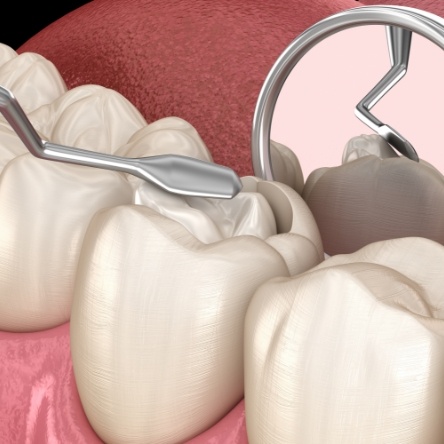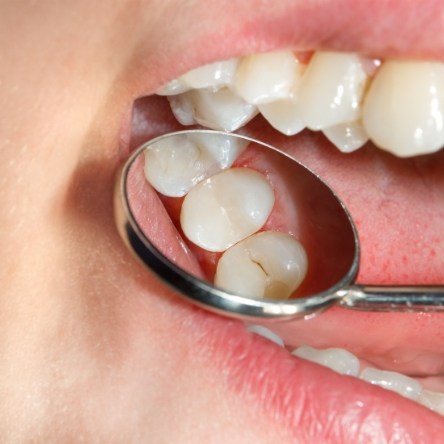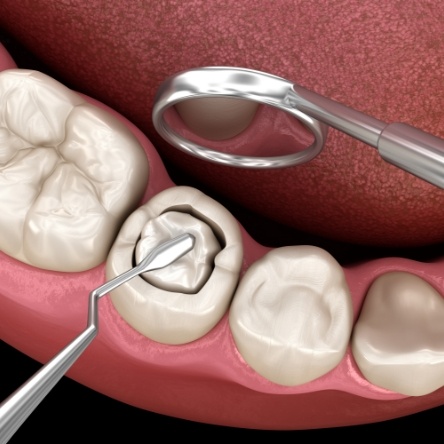Tooth-Colored Fillings Mesquite
Fill in Cavities Without Marring Your Smile

For many years, amalgam (a mix of silver, mercury, and other metals) was the material of choice for filling cavities. Unfortunately, metal fillings come with some significant downsides, including the fact that their color clashes with the enamel around them. Today, modern dentistry offers an aesthetically pleasing alternative to amalgam – tooth-colored fillings in Mesquite. Call us to find out if you might benefit from this type of restorative care.
Why Choose TrueCare Dentistry For Tooth-Colored Fillings?
- We Treat Patients of All Ages
- State-of-the-Art Digital Imaging for Accurate Treatment
- Natural Solutions Used to Create Flawless Smiles
What Are Tooth-Colored Fillings Made Of?

Most tooth-colored fillings are made of composite resin, which is a mixture of ceramic and plastic materials. The resin comes in many different shades, so our team can use the color that most closely matches your natural enamel. The material is both flexible and durable, and once it is in place, it will be virtually indistinguishable from the rest of your smile. It also bonds well with teeth, ensuring secure adhesion to the tissue that surrounds it.
Benefits of Tooth-Colored Fillings vs. Amalgam Fillings

The most famous benefit of tooth-colored fillings is their aesthetic appeal. Not only do they blend in well with tooth enamel, but they will never cause permanent gray stains like amalgam fillings can. Other ways in which tooth-colored fillings are superior to metal ones include:
- Amalgam contains high levels of mercury, a toxic metal that has been associated with hundreds of symptoms, including headaches, fatigue, and more. Resin fillings are metal-free and therefore pose a lower health risk.
- Metal has a higher thermal conductivity rate than composite resin. This means that composite resin fillings pose a lower risk of increasing tooth sensitivity.
- Metal fillings expand and contract slightly in response to temperature changes, which can damage the tooth that surrounds them. Composite fillings do not have this problem.
- Placing a composite filling requires less removal of tooth enamel and dentin (the layer beneath the enamel) than placing a metal filling.
How Are Tooth-Colored Fillings Placed?

Depending on how deep the cavity is, we may first need to numb the tooth and the area around it. Then, Dr. Rana gently removes the decayed area and inserts the resin into the cavity. A special light cures the resin, so it only takes a few seconds to harden. Then, we check your bite to make any needed adjustments to the filling. In most cases, placing a composite resin filling takes less than one hour.
Caring for Your Tooth-Colored Fillings

Caring for your tooth-colored fillings is easy. Simply be sure that you:
- Avoid sticky foods for at least a day after you receive the filling. In rare cases, foods like taffy or gummy candy can dislodge a new filling.
- Maintain excellent oral hygiene. Keeping the filling and the area around it clean via brushing and flossing will protect your dental work and your smile’s overall well-being.
- Enjoy staining foods and drinks in moderation. Just like your natural teeth, composite resin can become stained over time. You should limit your intake of coffee, red wine, black tea, and other dark substances.
- Use an alcohol-free mouth rinse. Extended exposure to alcohol can soften the filling.
- Visit our office for regular checkups. At your appointments, we’ll check to make sure your filling is still doing its job correctly.
